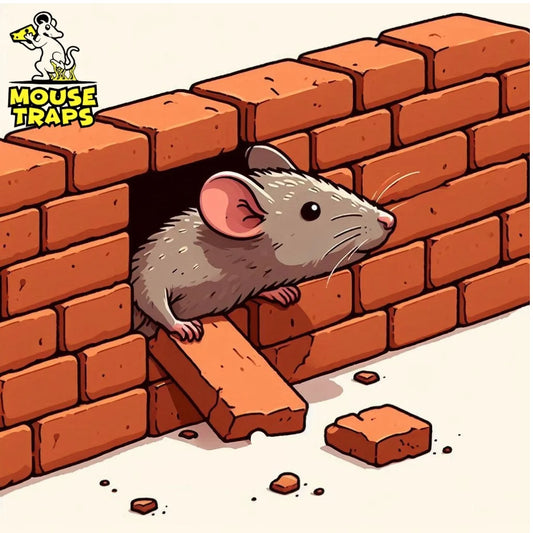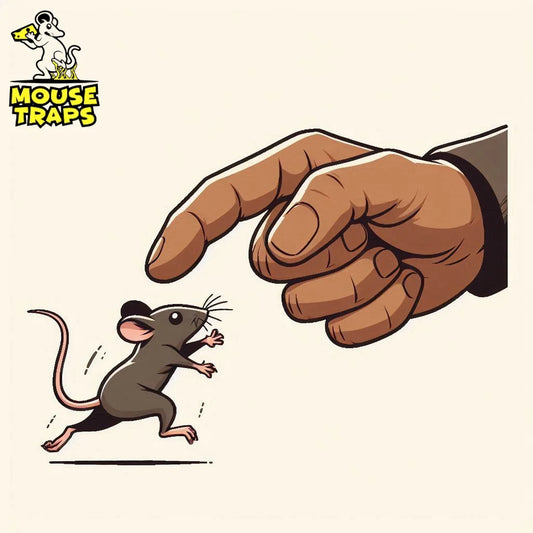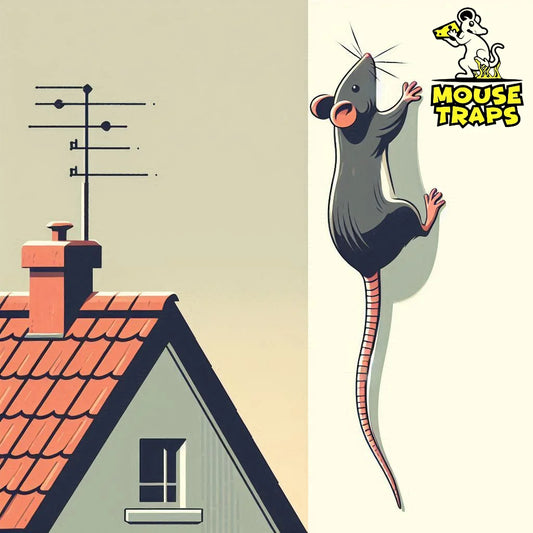Introduction:
Bird feeding enthusiasts often find themselves facing a common nuisance: rats. These agile climbers can quickly take advantage of bird feeders and nearby trees, posing a challenge to both the cleanliness of the feeding area and the safety of avian visitors. However, with the right strategies, it's possible to deter rats effectively while still welcoming feathered friends to your garden. Here, we'll explore several proven tactics to keep rats at bay and ensure a pleasant birdwatching experience.
Prune Tree Branches:
- Rats are excellent climbers and can use overhanging branches to access bird feeders or structures near trees.
- Trim branches back to at least 6 feet away from any structures or bird feeders to remove easy access points for rats.
- Regularly inspect trees for new growth that could provide a pathway for rats and promptly trim them back.

Install a Baffle:
- A baffle is a physical barrier that prevents rats from climbing up the pole supporting the bird feeder.
- Choose a baffle made of metal or plastic that is smooth and difficult for rats to grip onto.
- Ensure the baffle is positioned low enough on the pole so that rats cannot jump onto the feeder from nearby structures.

Choose the Right Feeder:
- Select bird feeders that are specifically designed to be rat-resistant.
- Look for feeders with narrow perches that make it difficult for rats to balance or grip onto while feeding.
- Weight-activated feeders are also effective, as they close off access to the food when a heavier animal (like a rat) climbs onto them.

Use Squirrel-Proofing Techniques:
- Many techniques used to deter squirrels can also be effective against rats.
- Squirrel-proof bird feeders often have mechanisms such as spring-loaded perches or cages that prevent larger animals from accessing the food.
- You might want to think about getting a bird feeder with settings so it can cater to bird sizes and keep rats away.

Keep the Area Clean:
- Rats are attracted to sources of food, including spilled birdseed and debris around the feeder.
- Regularly clean up fallen seeds and debris from the ground around the feeder to remove potential food sources.
- Use a broom or rake to sweep the area clean, and consider placing a tray or catch basin under the feeder to collect fallen seeds.

Use Rat Traps:
- Rat traps can be an effective way to control rat populations around bird feeders.
- Place traps strategically around the area, focusing on pathways and access points that rats use to reach the feeder.
- Use bait such as peanut butter or dried fruit to attract rats to the traps, and check them regularly to remove any trapped rats.
Live Humane Traps:
Live humane traps are designed to capture small animals such as rats without harming them. Here's how they typically work:

-
Design: Live humane traps are usually made of wire mesh or durable plastic. They feature a door or entry point that allows the rat to enter the trap but prevents them from escaping once inside.
-
Baiting: To attract rats into the trap, bait such as peanut butter, nuts, or dried fruit is placed inside. The bait entices the rat to enter the trap setting off a mechanism that shuts the door, behind them.
-
Non-Lethal Capture: Live humane traps are designed to capture rats without causing harm. Once the rat is trapped inside, they remain unharmed until the trap is checked.
-
Release: After capturing a rat, the trap can be transported to a suitable location away from human habitation. Once there, the door can be opened, and the rat can safely exit the trap and return to the wild.
-
Monitoring: It's essential to check live humane traps regularly to ensure that any captured rats are not left inside for an extended period. Regular monitoring also allows for the prompt release of captured rats.
Benefits of Live Humane Traps:
-
Non-Lethal: Live humane traps offer a humane and non-lethal method of capturing rats. They allow for the safe capture and release of rats without causing harm to the animals.
-
Ethical Considerations: Live humane traps align with ethical considerations regarding animal welfare. They provide a more compassionate approach to pest control by avoiding injury or suffering to captured rats.
-
Safe Handling: Live humane traps are safe and easy to handle, both for the person setting the trap and for any captured animals. There is minimal risk of injury or harm during the trapping process.
-
Reduced Odor: Since live humane traps capture rats alive, there is less risk of odor associated with decomposing carcasses. This can be particularly beneficial when dealing with indoor infestations.
-
Environmental Impact: Live humane traps have minimal environmental impact compared to other pest control methods. They refrain from using toxins or substances that may cause harm to species or pollute the surroundings.
-
Legal Compliance: In some areas, the use of live humane traps may be required by law or regulation for certain types of pest control. Using these traps ensures compliance with local regulations and guidelines.
Sticky Glue Pad Traps:

Sticky glue pad traps, also known as glue boards or glue traps, are another method used to capture rats. Here's how they work:
-
Design: Sticky glue pad traps consist of a flat board coated with a strong adhesive. When a rat steps onto the adhesive surface, they become stuck in place.
-
Placement: Glue traps are typically placed along pathways or near feeding areas where rats are known to frequent. They can also be placed next, to walls or, in corners where rats are expected to pass by.
-
Attractants: To increase the effectiveness of sticky glue traps, bait such as food or nesting material may be placed on the center of the trap. The bait entices rats to step onto the adhesive surface.
-
Capture: Once a rat steps onto the sticky surface, they become firmly stuck and unable to free themselves. The strong adhesive prevents them from escaping.
-
Disposal: After capturing a rat, the entire glue trap with the trapped rat can be disposed of. Some glue traps are designed for single-use and can be discarded along with the captured rat.
-
Ethical Considerations: Sticky glue traps are controversial due to concerns about animal welfare. Rats caught in glue traps may suffer stress, injury, or even death if not promptly removed. Additionally, unintended targets such as birds or small mammals may also become trapped on glue pads.
Benefits of Sticky Glue Pad Traps:
-
Effectiveness: Sticky glue pad traps are highly effective at capturing rats. Once a rat steps onto the adhesive surface, they become firmly stuck, preventing escape.
-
Ease of Use: Sticky glue pad traps are simple to set up and require no baiting or additional equipment. They can be placed directly in areas where rats are known to frequent, making them convenient for pest control.
-
Indoor Use: Sticky glue pad traps are suitable for indoor use in homes, businesses, and other enclosed spaces where traditional traps may not be practical. They can be placed discreetly along walls or in corners to capture rats where they travel.
-
Monitoring: Glue pad traps provide a visual indicator of rat activity. Once a rat is captured, it is easily visible on the adhesive surface, allowing for prompt removal and disposal.
-
Affordability: Sticky glue pad traps are often more affordable than other pest control methods, making them a cost-effective option for homeowners and businesses looking to manage rat infestations on a budget.
-
No Mechanical Parts: Unlike traditional traps that may have moving parts or mechanisms that can malfunction, sticky glue pad traps have no mechanical components, reducing the risk of failure or breakage.
Natural Deterrents:
- Some natural substances, such as peppermint oil or predator urine, may help deter rats.
- Apply peppermint oil around the base of the tree or on the feeder itself to create a scent barrier that rats find unpleasant.
- You can also use predator urine, which you can find in garden supply shops to scatter around the area. This might make rats think a predator is nearby and keep them away.
Secure Garbage Bins:
- Rats are opportunistic feeders and will take advantage of any available food source, including garbage bins.
- Ensure that garbage bins in the vicinity of the bird feeder are tightly sealed to prevent rats from accessing food waste.
- Use secure lids or bungee cords to keep lids closed, and regularly empty bins to remove attractants for rats.
Professional Assistance:
- If rat infestation persists despite your efforts, consider seeking help from pest control professionals.
- Experts, in pest control have the ability to carefully examine the area and offer customized solutions to effectively tackle the issue of rats.
- To manage rat populations and avoid infestations individuals might use a mix of trapping, baiting and exclusion methods.
Conclusion:
By implementing these strategies you can effectively deter rats from reaching bird feeders and trees creating an more enjoyable environment, for birds and bird enthusiasts. Whether its using barriers, maintaining cleanliness or seeking help, from experts there are ways to prevent rats and maintain the peacefulness of your birdwatching spot.




